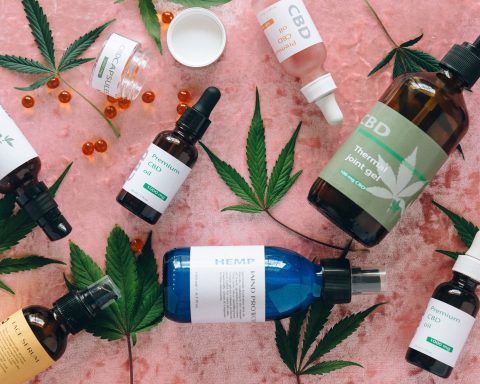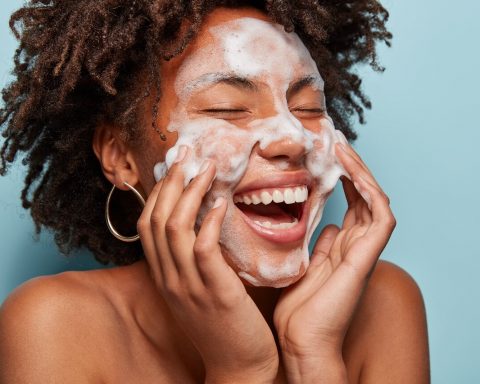Does your makeup slip after only 2 hours of wear?
Do you have problems with acne and blackheads?
Do you look like a grease ball the whole Summer?
If you got one ‘yes’, then you have oily skin. It’s not something you can “cure” or change permanently. But, you can manage it.
Today, I’ll answer all questions you had about oily skin and show you how to care for it. Let’s go.
Where Does Skin Oil Come From?
The oil that comes out of your pores is called sebum. It’s produced by sebaceous glands. Those glands are located in the middle layer of your skin, right next to the root of your hair.
The sebaceous glands and the hair follicle use the same way to get out of the skin, your pores. This is why it feels like your scalp gets oily quicker than other parts of your body, and why sometimes you can form small blemishes after hair removal.
Why is the surface skin cell dead but still bringing oil?
Having oily skin doesn’t prevent dead skin cells from appearing on the surface. As long as you don’t remove them through cleansing and exfoliation, they will collect and create rough patches.
If you have oily skin, you have a faster cell turnover than someone with dry skin. The good news is that you will look younger for longer and skin treatments show results faster.
The bad news? Blackheads, hormonal acne, stress acne, bad cleansing routine acne, body acne, dandruff, etc.
You will have to exfoliate more diligently in comparison to other skin types. However, stay away from scrubs. Get your hands on a gentle chemical exfoliant like a toner that contains salicylic, glycolic, or lactic acid.
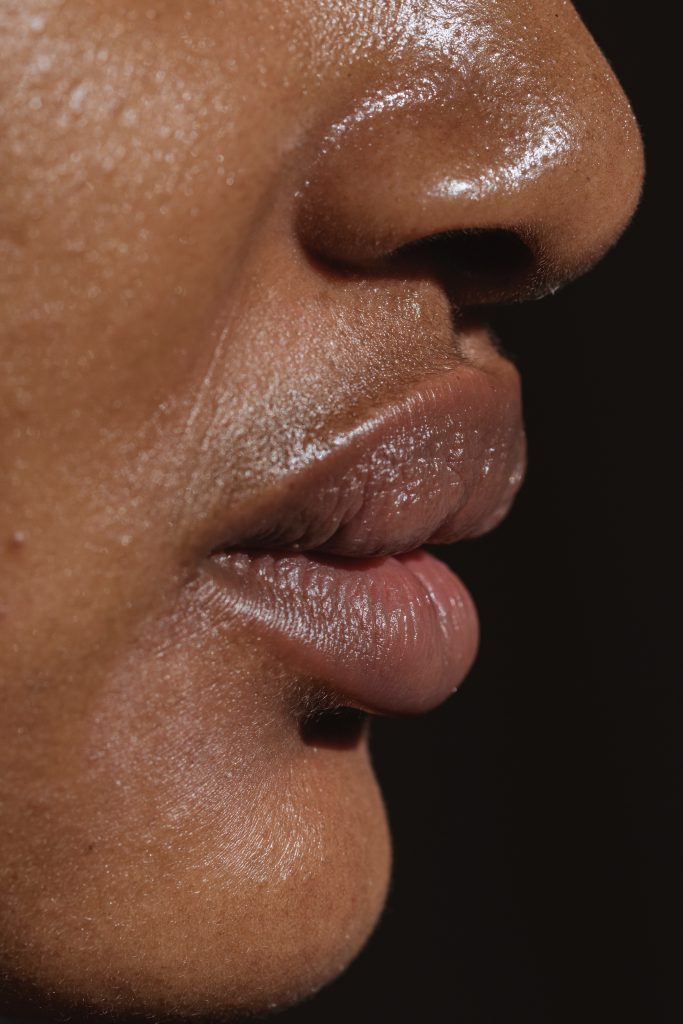
Why do some people have dry skin and some have oily skin?
It’s part macro and part microevolution.
Because we don’t have fur, humans produced more oil as a skin defense mechanism. Then we migrated and settled in different climates, and we started wearing clothes. Eventually, our ancestor’s bodies began producing less oil.
Today, some of us still have oily skin, along with other “useful” parts like wisdom teeth and a tailbone.
Where does the oil go on dry skin types?
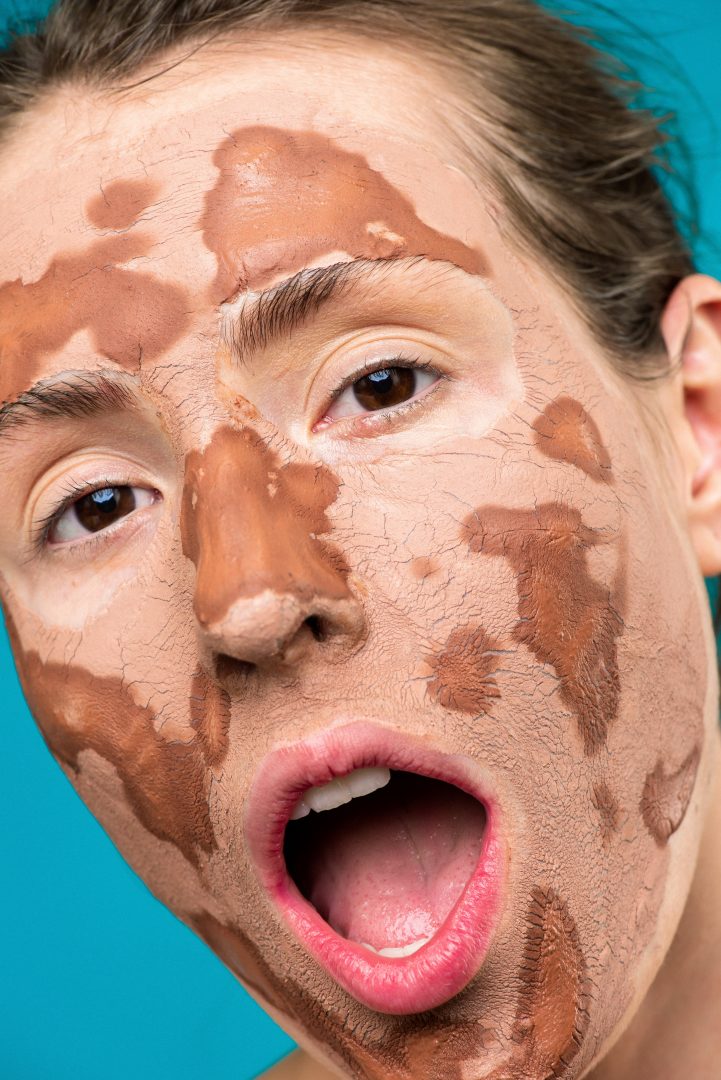
It doesn’t quite go anywhere. The skin simply doesn’t produce enough oil. It’s completely genetic, and you can’t do much about it.
Dehydrated skin is something else. It’s a condition in which skin loses moisture. It usually happens when something called the natural skin barrier gets damaged.
The natural skin barrier is a thin lipid layer on the epidermis that, among other things, prevents the skin from dehydrating. Even though it’s made from oil, if you have oily skin you can still damage it. With an oily skin type, damaging the natural skin barrier will both make your skin dehydrated and produce even more sebum.
It can repair itself, but you will need to stop doing things that led to this damage in the first place.
How to make oily skin less oily
Apply moisturizers

I know it sounds counterintuitive, but hear me out. When your skin gets dehydrated, it produces more oil. Think of it as your skin registering it’s losing water, and trying to retain it in the only way it knows how.
Your skin type can be oily and dehydrated. It usually happens due to lack of sleep, bad lifestyle habits, hot showers, cold climate, and bad skincare routine. All of this I’ve just mentioned can damage your natural skin barrier.
A good moisturizer is supposed to introduce moisture into the skin while caring for the natural skin barrier at the same time.
Now, moisturizer doesn’t have to mean cream by default. These days you have options like gels, essences, and even toners. Find the texture that works for you, and pay attention to the active ingredients.
For example, CBD skincare tends to both deliver antioxidants (important for anti-aging and battling free radicals from the Sun), and compounds that care for and repair your natural skin barrier.
Wash your face regularly
You need to cleanse properly. And no, those wipes of micellar water won’t do. If you wear makeup and/or sunscreen, you need to dissolve those with oil. Then, follow up by washing your face. Also, always wash your face before applying makeup.
A lot of dirt and gunk can trigger the production of sebum. If you’ve ever tried to layer a silicone primer, a pore primer, a thick foundation and concealer around your T-zone, you know what I mean. You get oiler quicker and the makeup just slips.
Now imagine having remnants of makeup from a poor cleansing routine and that piling up month after month, year after year. Even worse, imagine putting your makeup or SPF over the dirt from the night before. Yikes.
The cleansers you use don’t have to be expensive. Find something pH neutral or mildly acidic, so you can get a thorough cleanse without damaging your natural skin barrier.
There’s also probably no need to buy cleansing tools. A simple muslin cloth is all you need.
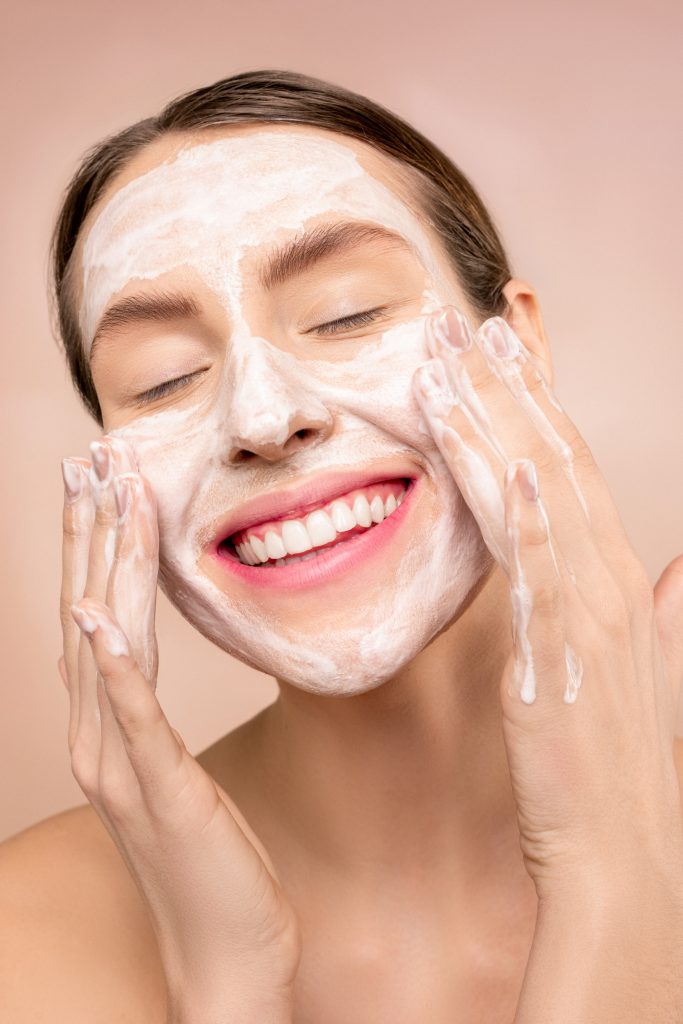
Use a toner
You have two types of toners you can use for oily skin.
The first is the astringent toner. Those are also called cleansing toners because they remove excess oil and dirt. They are suitable for Summer months or very oily skin.
The problem is that some astringent toners use alcohol. Alcohol may dry out all the sebum, but guess what else it dries out? That’s right, natural skin barrier.
That being said, not alcohols are made equal. Look for “ethanol” on the ingredients list to know what to avoid.

The second type of toner is meant for balancing and moisturizing your skin after cleansing. They can be mildly acidic and/or have anti-inflaming and nourishing ingredients.
Have you heard of the 7-skin method? You’re supposed to apply 7 layers of toner to hydrate your skin. Now, 7 layers seem like a lot, but applying multiple layers of toner can hydrate your skin better than many cream moisturizers on the market.
Also, if you use a toner with natural skin barrier-friendly ingredients (i.e, something from a CDB skincare line), you could skip other skincare steps altogether.
Use pore shrinking serums
These serums have become more and more popular lately. However, they are only a temporary solution.
Most of them will buy you at least a couple of extra hours of matte skin. But, if you want more long-lasting effects, look for ingredients that help clean out pores and strengthen the natural skin barrier.
Use oil absorbers
Why oil absorbers instead of powder? Well, remember us talking about how oily skin doesn’t like layers? The same way it dislikes layers of makeup, the same goes with layers of oil?
Mattifying powder bonds with the sebum to create another layer of makeup. So, it’s a no-go. Great for setting the makeup in the morning, but mediocre for touch-ups.
The better options are oil-absorbing sheets and rollers. Oil-absorbing rollers may be a novelty to you, but are worth checking out.
They are usually made from volcanic rock and as you roll them over your skin, it absorbs excess sebum without disrupting your makeup. Then just wash the roller and leave it to dry. A single roller could last for years before it needs a replacement.
Conclusion
If you suffer from extremely oily skin, stress acne, enlarged pores, etc, just a few small changes in your skincare routine could solve your issues.
Start by double cleansing at night and washing your face before applying makeup and sunscreen. Moisturize your skin and use ingredients that are beneficial to your natural skin barrier.


